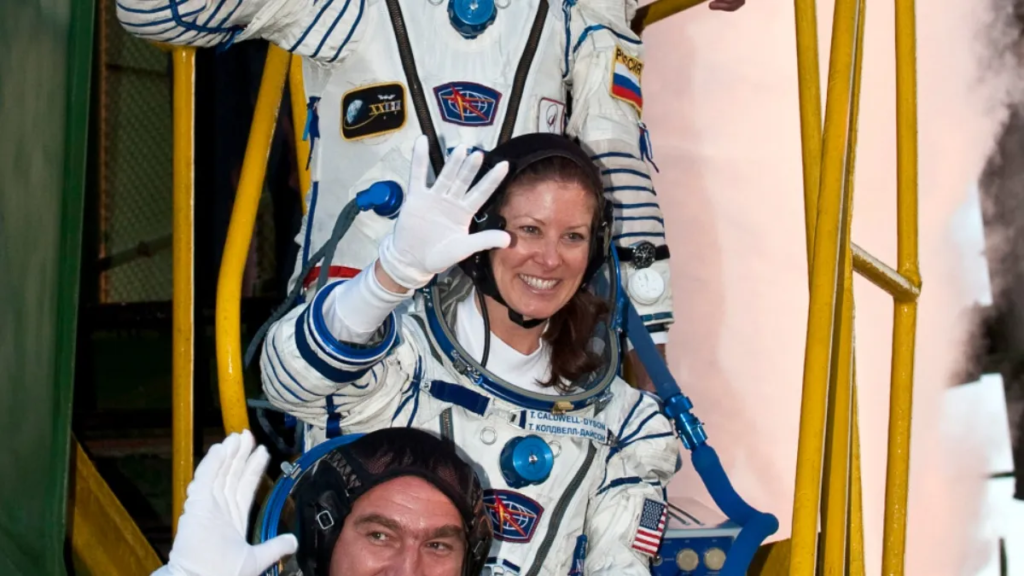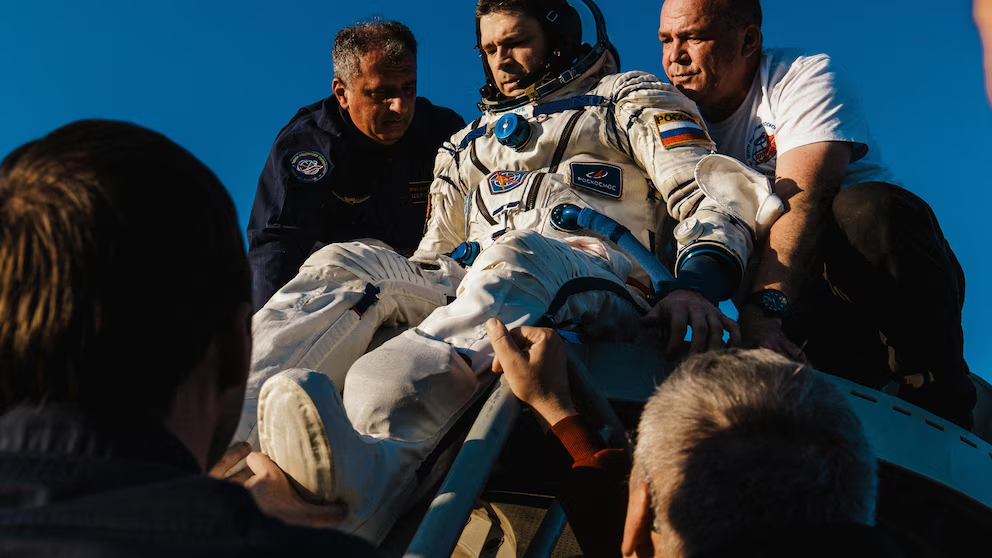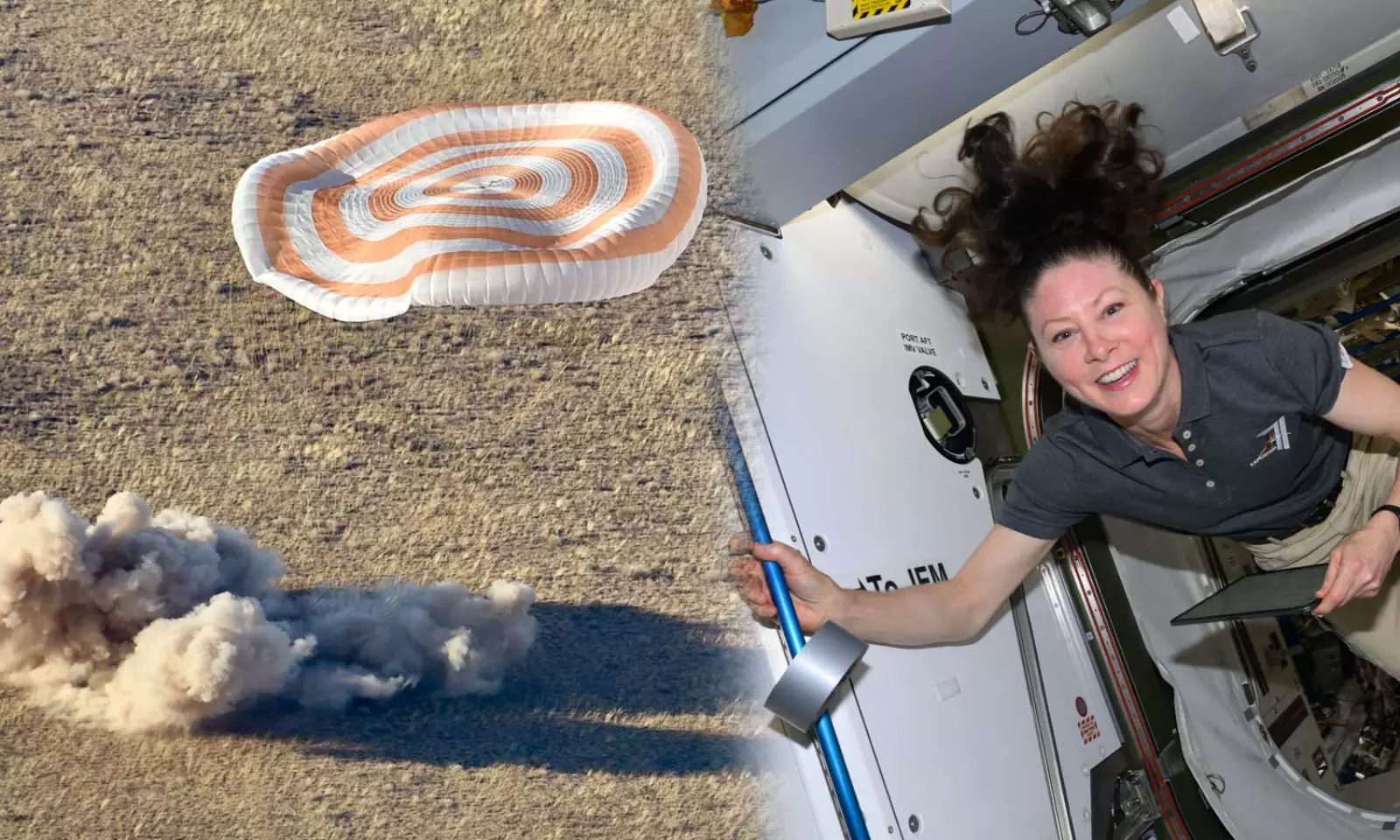Tracy Dyson, one of NASA’s highly accomplished astronauts, has successfully completed a remarkable mission aboard the International Space Station (ISS), spending an impressive 184 days in space.
Her mission not only signifies yet another successful space journey for NASA, but also underscores the immense contributions Tracy Dyson has made to scientific research and technological advancements in space.
After traveling over 78 million miles and completing 2,944 orbits around Earth, Dyson safely returned to Earth on Monday, September 23, 2024, landing in Kazakhstan.
Tracy Dyson’s return to Earth was a carefully coordinated event. She, along with her Russian counterparts, cosmonauts Oleg Kononenko and Nikolai Chub, landed aboard a Soyuz capsule.
Read : NASA’s SpaceX Crew-9 Duo Lands at Kennedy Space Center: Gears Up to Rescue Sunita Williams from ISS
Dyson’s return marked the conclusion of her third spaceflight, which saw her participate in groundbreaking research on the ISS. Dyson’s mission in space has captured the interest of both scientific communities and space enthusiasts around the world.
Tracy Dyson’s Incredible Space Journey
Dyson’s mission began on March 23, when she launched into space alongside Roscosmos cosmonaut Oleg Novitskiy and spaceflight participant Marina Vasilevskaya from Belarus. While Novitskiy and Vasilevskaya stayed aboard the ISS for only 12 days, Dyson continued her mission for a total of 184 days.
During her time on the ISS, Tracy Dyson orbited the Earth a staggering 2,944 times, covering 78 million miles in space. Her return to Earth marked the end of an extraordinary journey that further cemented her reputation as one of NASA’s leading astronauts.

One of the highlights of Dyson’s mission was her participation in numerous scientific experiments. Tracy Dyson worked on several advanced research projects during her stay on the ISS, including operating a 3D bioprinter to create cardiac tissue samples.
This cutting-edge technology could revolutionize the field of medical science by leading to the development of replacement organs and tissues for transplants. Dyson’s contribution to this research is expected to have far-reaching implications in both space and Earth-based medical advancements.
Scientific Contributions of Tracy Dyson in Space
Throughout her mission, Tracy Dyson took part in various innovative scientific activities that could potentially transform industries on Earth. One of the key experiments Dyson was involved in was the crystallization of model proteins.
This experiment was aimed at testing hardware that could have pharmaceutical applications, potentially leading to breakthroughs in drug development. Dyson’s role in this research highlights the importance of space-based experiments in advancing technology and improving life on Earth.
In addition to her work on pharmaceutical and medical research, Dyson also played a crucial role in a student-centered program. As part of her mission, Tracy Dyson oversaw a program in which student-designed software controlled free-flying robots aboard the ISS.
This initiative aimed to inspire young innovators by giving them the opportunity to work on real-world applications in space. Tracy Dyson’s mentorship and involvement in this program have been pivotal in encouraging the next generation of scientists and engineers.
⁉️Why didn't the western media cover this story yesterday? @CNN @BBC
— Spetsnaℤ 007 🇷🇺 (@Alex_Oloyede2) September 24, 2024
🇷🇺🇺🇲 American astronaut, Tracey Dyson who was abandoned by NASA was safely returned to Earth on the Russian Soyuz M-25 spacecraft.
Was it out of embarrassment that the country you fund to kiII is saving you? pic.twitter.com/JVy1NyyzMT
During her 184-day mission, Dyson also performed a spacewalk, adding another achievement to her illustrious career. On this spacewalk, which lasted for 31 minutes, Dyson contributed to the maintenance and improvement of the ISS.
In total, she has now conducted four spacewalks, with a combined spacewalking time of 23 hours and 20 minutes. These spacewalks are critical for the ongoing operation and upkeep of the ISS, and Dyson’s experience in this area continues to be invaluable to NASA’s space exploration efforts.
Tracy Dyson’s Legacy and Return to Earth
Tracy Dyson’s 184-day mission aboard the ISS is just one chapter in her stellar career as a NASA astronaut. Her safe return to Earth, alongside cosmonauts Oleg Kononenko and Nikolai Chub, marks the successful completion of an awe-inspiring journey in space.
The trio landed in Kazakhstan at 7:59 a.m. on September 23, 2024, after a flawless descent in the Soyuz capsule. Dyson’s mission, which was part of the larger Expedition 70/71, will be remembered for its significant contributions to scientific research, technological advancements, and space exploration.

The journey back to Earth for Dyson began when she, Kononenko, and Chub departed the ISS aboard the Soyuz MS-25 spacecraft at 4:36 a.m. EDT.
They landed safely southeast of Dzhezkazgan, Kazakhstan, with the aid of parachutes. Upon landing, Dyson and her fellow astronauts underwent medical checks before returning to Karaganda. From there, Tracy Dyson is expected to board a NASA plane that will take her back to the Johnson Space Center in Houston.
Tracy Dyson’s mission is also notable for the impressive feats accomplished by her crewmates. Oleg Kononenko, who was on his fifth spaceflight, now holds the record for the longest cumulative time spent in space, with a total of 1,111 days in orbit.
Nikolai Chub, who completed his first spaceflight, spent 374 days on the ISS, travelling 158.6 million miles and completing 5,984 orbits of the Earth. Together, Tracy Dyson and her crew have set new benchmarks in space exploration, contributing to the legacy of the ISS and the future of space travel.
The Future of Space Exploration
Tracy Dyson’s successful mission is a testament to the advancements made in space exploration and the continuous efforts of NASA and its international partners. As the ISS remains a hub for scientific research and technological innovation, astronauts like Tracy Dyson play a vital role in expanding our understanding of the universe.

Her contributions to medical and pharmaceutical research, coupled with her mentorship of young innovators, highlight the broader impact of space missions on both science and society.
With Tracy Dyson’s safe return to Earth, the focus now shifts to the future of space exploration. The ISS continues to host eight astronauts, including Americans Butch Wilmore and Suni Williams, whose return to Earth has been delayed.
As NASA prepares for future missions, including deep space exploration and potential manned missions to Mars, the knowledge and experience gained by astronauts like Tracy Dyson will be invaluable.
In the coming years, NASA will continue to push the boundaries of space exploration, with astronauts like Tracy Dyson leading the way. Her mission aboard the ISS not only showcases the incredible achievements of space science but also serves as an inspiration to future generations.
Tracy Dyson’s dedication to space exploration and her groundbreaking contributions to science have left an indelible mark on the field of astronautics.
Tracy Dyson’s 184-day mission aboard the ISS has been a remarkable journey filled with scientific discovery, technological innovation, and space exploration milestones.
From completing 2,944 orbits around the Earth to contributing to cutting-edge medical research, Tracy Dyson’s accomplishments are a testament to her skills and dedication as a NASA astronaut.
As she safely returns to Earth, her mission stands as a symbol of the progress being made in space exploration and the limitless possibilities that lie ahead.
let’s enjoy few years on earth with peace and happiness….✍🏼🙏

